Yard of the Week: Lush Aquatic Garden Welcomes Wildlife
The peaceful London landscape, with two ponds and a trickling waterfall, is a sanctuary for garden visitors of all types
In West London, landscape designer Jane Ashley turned a backyard lawn in a suburban yard into a secluded haven where the homeowners can enjoy wildlife up close. Keep reading to learn more about how she cleverly transformed the space.
Need a pro for your landscape design project?
Let Houzz find the best pros for you
Let Houzz find the best pros for you
Vision for the Garden
Before: The garden consists of a fish pond, shown here during its construction; a bog garden, in the trench behind the pond; and a smaller wildlife pond, out of frame on the right.
Ashley chose to use a pond liner rather than a preformed pond. “Preformed ponds are OK and they last a long time, but often the planting shelves aren’t wide enough,” she says. “The secret to making a pond look natural is to have deep [from front to back] planting shelves.”
With the method Ashley chose, the line is blurred between where the pond ends and the dry plantings begin. “That helps so much [in making it look natural], and it’s really good for all the wildlife, because they have areas in which to hide. We also put some rocks on the planting shelves to make it easier for things to get in and out,” the designer says.
Before: The garden consists of a fish pond, shown here during its construction; a bog garden, in the trench behind the pond; and a smaller wildlife pond, out of frame on the right.
Ashley chose to use a pond liner rather than a preformed pond. “Preformed ponds are OK and they last a long time, but often the planting shelves aren’t wide enough,” she says. “The secret to making a pond look natural is to have deep [from front to back] planting shelves.”
With the method Ashley chose, the line is blurred between where the pond ends and the dry plantings begin. “That helps so much [in making it look natural], and it’s really good for all the wildlife, because they have areas in which to hide. We also put some rocks on the planting shelves to make it easier for things to get in and out,” the designer says.
After: Hidden boundaries give the garden a secluded feel. “The trick of this garden is that although it’s small, you can’t tell where it ends,” Ashley says. “You can see shrubs and trees beyond it, so it looks like a continuation. If you can’t see a boundary, you feel enclosed in green. That’s the psychological benefit of a garden like this.”
Ashley planted a wonderful mix of greenery to create depth. “With a foliage garden, you want a really good backdrop of different greens, leaf shapes and textures,” she says. “That can take a garden a long way. Even if you don’t have any other color, it’s rare for a garden with all those greens in it not to work.”
From the front left, the plants include a gray-green juniper with a conifer behind it. “Conifers have been unfashionable, but they do a lot for the evergreen structure, and lots are interesting shapes, so I think they’re [a] good value,” Ashley says.
Behind the conifer is a shrubby box honeysuckle (Lonicera nitida ‘Baggesen’s Gold’) — “a very tolerant shrub that gives a lightness,” Ashley says — then Mexican orange (Choisya ternata) and also paperplant (Fatsia japonica), with its interesting leaf shape and evergreen nature.
Find a landscape designer near you on Houzz
Ashley planted a wonderful mix of greenery to create depth. “With a foliage garden, you want a really good backdrop of different greens, leaf shapes and textures,” she says. “That can take a garden a long way. Even if you don’t have any other color, it’s rare for a garden with all those greens in it not to work.”
From the front left, the plants include a gray-green juniper with a conifer behind it. “Conifers have been unfashionable, but they do a lot for the evergreen structure, and lots are interesting shapes, so I think they’re [a] good value,” Ashley says.
Behind the conifer is a shrubby box honeysuckle (Lonicera nitida ‘Baggesen’s Gold’) — “a very tolerant shrub that gives a lightness,” Ashley says — then Mexican orange (Choisya ternata) and also paperplant (Fatsia japonica), with its interesting leaf shape and evergreen nature.
Find a landscape designer near you on Houzz
The elegant tree seen here on the right is a Japanese maple (Acer palmatum ‘Orange Dream’), which turns an amazing orange in autumn. Just beneath it is more Mexican orange. “What I was trying to create was a completely green wall but of different textures,” Ashley says. “The pond plants disappear in winter, so they need evergreen planting around them to help.”
For the patio surrounding the pond, Ashley chose reclaimed York flagstone. “If you’re putting in a pond, it’s a nice choice, as it very quickly looks as if it’s been there for a long time,” she says.
Fish Pond
There are various waterlilies in the pond as well as water hawthorn (Aponogeton distachyos) — the white flowers seen here. “They aren’t as showy as waterlilies, but they appear much earlier in the season, so they provide cover,” Ashley says. “It’s a tough, reliable plant, and it’s there longer than the waterlilies.”
The designer says it’s OK to start out with fewer plants than you might normally include in a garden, as “pond plants grow much faster and more vigorously than most land plants,” she says. “What’s really important though,” the designer stresses, “is your oxygenator — pondweed. It has a massive role to play in terms of keeping the water fresh. I use hornwort, an excellent native plant.”
The plants in and around the pond nicely illustrate Ashley’s skill in mixing colors and textures. As well as the gray-green juniper, there’s lime green sedge (Carex elata ‘Aurea’), which is a signature plant. “It stays that lovely light color all season,” Ashley says. “It’s very good for helping to disguise the back edges of a pond. You can grow it in damp soil, but it really likes living in water.” Lady’s mantle (Alchemilla mollis) adds heart-shape leaves and frothy yellow flowers to the mix, while the thin blades of native iris “give a nice sense of structure,” she says.
There are various waterlilies in the pond as well as water hawthorn (Aponogeton distachyos) — the white flowers seen here. “They aren’t as showy as waterlilies, but they appear much earlier in the season, so they provide cover,” Ashley says. “It’s a tough, reliable plant, and it’s there longer than the waterlilies.”
The designer says it’s OK to start out with fewer plants than you might normally include in a garden, as “pond plants grow much faster and more vigorously than most land plants,” she says. “What’s really important though,” the designer stresses, “is your oxygenator — pondweed. It has a massive role to play in terms of keeping the water fresh. I use hornwort, an excellent native plant.”
The plants in and around the pond nicely illustrate Ashley’s skill in mixing colors and textures. As well as the gray-green juniper, there’s lime green sedge (Carex elata ‘Aurea’), which is a signature plant. “It stays that lovely light color all season,” Ashley says. “It’s very good for helping to disguise the back edges of a pond. You can grow it in damp soil, but it really likes living in water.” Lady’s mantle (Alchemilla mollis) adds heart-shape leaves and frothy yellow flowers to the mix, while the thin blades of native iris “give a nice sense of structure,” she says.
Ashley stresses the importance of investing in the best filter you can. “Ponds do get mucky, and the more you can do to keep the water clean the better, especially if you have fish,” she says.
The large pond has a very good system. A pipe runs underneath the grass to a big filter hidden next to the shed. There’s also a UV clarifier, which helps to reduce algae. To tackle blanket weed, an alga that can float on or near a pond’s surface, it’s important to have enough floating plants.
The pond still requires some maintenance, however. “I don’t think there’s such a thing as a pond that requires no maintenance,” Ashley says. “It’s not sensible to have one, especially with fish, if you don’t like messing about with them.”
Shop for patio furniture on Houzz
The large pond has a very good system. A pipe runs underneath the grass to a big filter hidden next to the shed. There’s also a UV clarifier, which helps to reduce algae. To tackle blanket weed, an alga that can float on or near a pond’s surface, it’s important to have enough floating plants.
The pond still requires some maintenance, however. “I don’t think there’s such a thing as a pond that requires no maintenance,” Ashley says. “It’s not sensible to have one, especially with fish, if you don’t like messing about with them.”
Shop for patio furniture on Houzz
Waterfall
The pump for the waterfall is separate from the main pump, so it doesn’t have to be on all the time. There’s a little pool at the top from which water flows down to the fish pond.
Ashley has edged the water with rocks. “You want to have a lot of rocks, not just a few around the waterfall, and tons of stones and plants around it as well,” she says. “You don’t want to see bare patches, so it looks natural.”
The pump for the waterfall is separate from the main pump, so it doesn’t have to be on all the time. There’s a little pool at the top from which water flows down to the fish pond.
Ashley has edged the water with rocks. “You want to have a lot of rocks, not just a few around the waterfall, and tons of stones and plants around it as well,” she says. “You don’t want to see bare patches, so it looks natural.”
The waterfall is popular with birds. “Having running water makes a massive difference to getting the birds in,” Ashley says, “because they come to drink and bathe. It’s stepped and there are little low bits they can get into.”
Wildlife Pond
This is the wildlife pond, which is separated from the fish pond by big rocks and planting shelves on both sides. “You can’t really see where one pond ends and the other begins, as there’s a seam of planting between them,” Ashley says.
“This pond is very much designed for the frogs, with its shallow beach,” she says. “There’s a filter in here, but it doesn’t get turned on when the tadpoles are little, because you don’t want them getting sucked into it. Once the tadpoles have gone, it can be turned on and it will clear the water.”
This is the wildlife pond, which is separated from the fish pond by big rocks and planting shelves on both sides. “You can’t really see where one pond ends and the other begins, as there’s a seam of planting between them,” Ashley says.
“This pond is very much designed for the frogs, with its shallow beach,” she says. “There’s a filter in here, but it doesn’t get turned on when the tadpoles are little, because you don’t want them getting sucked into it. Once the tadpoles have gone, it can be turned on and it will clear the water.”
While the greens are key in a garden like this, accent colors can really add to the design. The feathery blue flowers seen here are mountain bluet (Centaurea montana), which look gorgeous teamed with the pink peonies.
“The forget-me-nots come out early and cover a lot of soil that would otherwise be bare in the early part of the year. That gives the frogs safe cover when they’re vulnerable,” Ashley says. After the forget-me-nots have flowered for a while, most of them can be pulled out to make space for other plants to come up. As they’re self-seeders, they’ll spread again the following year.
The purple-flowering plant seen here is honesty (Lunaria annua). “It’s a self-seeder. It can cope with shade, and once it pops up, it just keeps going,” Ashley says. “It’s a really nice plant in the spring. It fills gaps and it has very pretty seedheads after the flowers. It’s a good one if you want a slightly wild look in your garden.”
The purple-flowering plant seen here is honesty (Lunaria annua). “It’s a self-seeder. It can cope with shade, and once it pops up, it just keeps going,” Ashley says. “It’s a really nice plant in the spring. It fills gaps and it has very pretty seedheads after the flowers. It’s a good one if you want a slightly wild look in your garden.”
Roses (Rosa ‘Madame Grégoire Staechelin’) and purple cranesbill (Geranium psilostemon) add a swath of pretty color.
The yellow-green plant in the foreground here is spurge (Euphorbia amygdaloides var. robbiae).
Ashley avoided the pond’s having to be covered with a mesh by installing a heron scarer (the black tripod you can just make out on the left in this photo). “It’s connected to a hose, and it has a motion-activated sensor, which when triggered squirts a jet of water from side to side, so it scares off big birds,” she says. “It means the fish are protected.”
The garden is now teeming with wildlife. “As soon as the temperature warms up, the pond attracts so much, from dragonflies and lots of insects to birds and frogs,” Ashley says. “It’s such a nice place to be.”
More on Houzz
Read more stories about landscape design
Browse thousands of landscape photos
Hire a landscape contractor
Shop for your outdoor spaces
More on Houzz
Read more stories about landscape design
Browse thousands of landscape photos
Hire a landscape contractor
Shop for your outdoor spaces

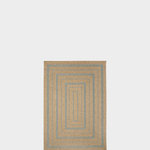
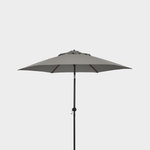
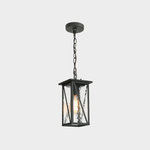
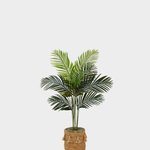
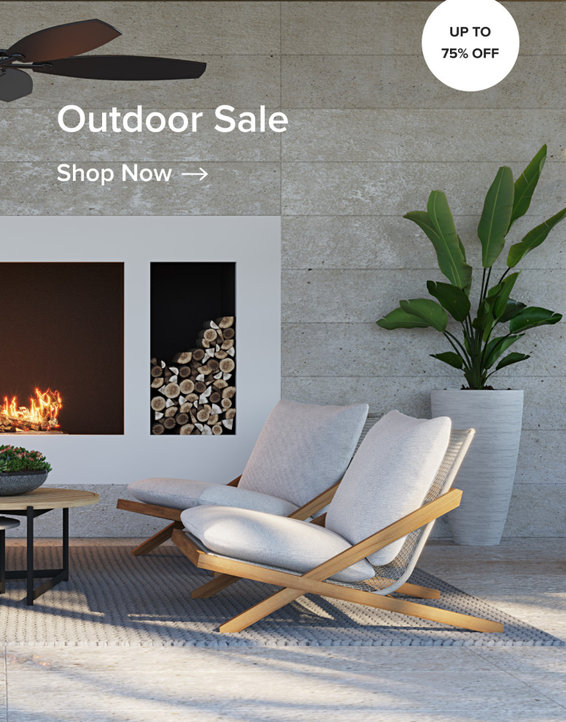












Who lives here: A family with older children
Location: West London
Size: 1,163 square feet (108 square meters); 30 by 39 feet
Designer: Jane Ashley Garden Design
“The aim with this garden was to create an enclosed green retreat that was a beautiful and serene place to sit, with the sound of running water plus wildlife and fish,” Ashley says.